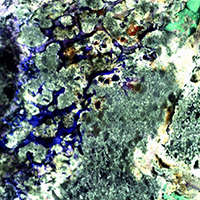Evaluation of biocompatibility, osteointegration and biomechanical properties of the new Calcemex® cement: An in vivo study

Submitted: 4 August 2021
Accepted: 11 January 2022
Published: 27 January 2022
Accepted: 11 January 2022
Abstract Views: 1013
PDF: 402
HTML: 19
HTML: 19
Publisher's note
All claims expressed in this article are solely those of the authors and do not necessarily represent those of their affiliated organizations, or those of the publisher, the editors and the reviewers. Any product that may be evaluated in this article or claim that may be made by its manufacturer is not guaranteed or endorsed by the publisher.
All claims expressed in this article are solely those of the authors and do not necessarily represent those of their affiliated organizations, or those of the publisher, the editors and the reviewers. Any product that may be evaluated in this article or claim that may be made by its manufacturer is not guaranteed or endorsed by the publisher.
Similar Articles
- Flavia Carton, Mathieu Repellin, Giovanna Lollo, Manuela Malatesta, Alcian blue staining to track the intracellular fate of hyaluronic-acid-based nanoparticles at transmission electron microscopy , European Journal of Histochemistry: Vol. 63 No. 4 (2019)
- A. Makowiecka, A. Simiczyjew, D. Nowak, A.J. Mazur, Varying effects of EGF, HGF and TGFβ on formation of invadopodia and invasiveness of melanoma cell lines of different origin , European Journal of Histochemistry: Vol. 60 No. 4 (2016)
- A. Bolekova, D. Kluchova, L. Tomasova, N. Hvizdosova, Effect of retinoic acid on the nitrergic innervation of meibomian glands in rats , European Journal of Histochemistry: Vol. 56 No. 4 (2012)
- CarloAlberto Redi, Cytoskeleton - Methods and Protocols , European Journal of Histochemistry: Vol. 54 No. 1 (2010)
- G. Radaelli, C. Poltronieri, C. Simontacchi, E. Negrato, F. Pascoli, A. Libertini, D. Bertotto, Immunohistochemical localization of IGF-I, IGF-II and MSTN proteins during development of triploid sea bass (Dicentrarchus labrax) , European Journal of Histochemistry: Vol. 54 No. 2 (2010)
- E. I. Cortés-Gutiérrez, M. I. Davila-RodrÃguez, J. L. Fernández, C. López-Fernández, J. Gosalvez, DNA breakage detection-fluorescence in situ hybridization (DBD-FISH) in buccal cells , European Journal of Histochemistry: Vol. 56 No. 4 (2012)
- Y. Sun, L. Zhu, X. Huang, C. Zhou, X. Zhang, Immunohistochemical localization of nerve fibers in the pseudocapsule of fibroids , European Journal of Histochemistry: Vol. 58 No. 2 (2014)
- Manuela Monti, CarloAlberto Redi, Ernesto Capanna, Genome size evaluations in cockroaches: new entries , European Journal of Histochemistry: Vol. 66 No. 2 (2022)
- T. Galbo, I. L Pedersen, T. Fløyel, C. H. Bang-Berthelsen, P. Serup, O. D Madsen, J. Hald, Novel monoclonal antibodies against Pdx1 reveal feedback regulation of Pdx1 protein levels , European Journal of Histochemistry: Vol. 54 No. 2 (2010)
- Manuela Monti, Basic confocal microscopy , European Journal of Histochemistry: Vol. 56 No. 1 (2012)
<< < 17 18 19 20 21 22 23 24 25 26 > >>
You may also start an advanced similarity search for this article.

 https://doi.org/10.4081/ejh.2022.3313
https://doi.org/10.4081/ejh.2022.3313











